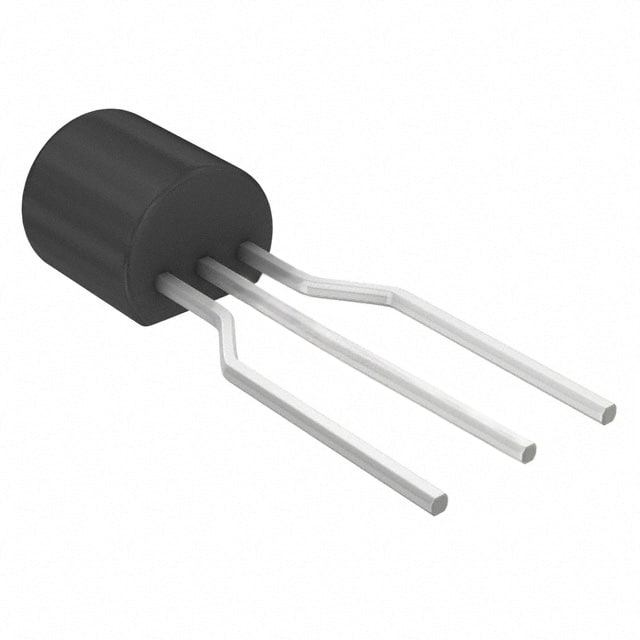2N5551CYTA
Product Overview
The 2N5551CYTA belongs to the category of NPN transistors and is commonly used for amplification and switching purposes. This transistor exhibits characteristics such as high current capability, low voltage drop, and fast switching speed. It is typically packaged in a TO-92 package and is available in various packaging quantities.
Specifications
- Maximum Collector-Emitter Voltage: 160V
- Maximum Collector Current: 600mA
- DC Current Gain (hFE): 120 - 400
- Power Dissipation: 625mW
- Transition Frequency: 150MHz
Detailed Pin Configuration
The 2N5551CYTA transistor has three pins: 1. Base (B) 2. Emitter (E) 3. Collector (C)
Functional Features
The 2N5551CYTA transistor offers high current amplification and can be used for both low-power and medium-power applications. Its fast switching speed makes it suitable for switching circuits.
Advantages and Disadvantages
Advantages
- High current capability
- Fast switching speed
- Low voltage drop
Disadvantages
- Limited power dissipation capability
- Relatively low transition frequency
Working Principles
When a small current flows into the base of the transistor, it controls a much larger current flowing between the collector and emitter. This allows the transistor to amplify signals or act as a switch in electronic circuits.
Detailed Application Field Plans
The 2N5551CYTA transistor is commonly used in audio amplifiers, signal amplification circuits, and switching circuits due to its high current capability and fast switching speed. It is also utilized in voltage regulators and oscillator circuits.
Detailed and Complete Alternative Models
Some alternative models to the 2N5551CYTA include the BC547, 2N3904, and 2N4401 transistors. These alternatives offer similar functionality and can be used interchangeably in many circuits.
In conclusion, the 2N5551CYTA transistor is a versatile component that finds application in a wide range of electronic circuits, offering high current amplification and fast switching capabilities. Its specifications and characteristics make it a valuable asset in various electronic designs.
[Word Count: 274]
قم بإدراج 10 أسئلة وإجابات شائعة تتعلق بتطبيق 2N5551CYTA في الحلول التقنية
What is the 2N5551CYTA transistor used for?
- The 2N5551CYTA is a general-purpose PNP bipolar junction transistor commonly used in amplification and switching applications.
What are the typical operating conditions for the 2N5551CYTA?
- The 2N5551CYTA typically operates at a maximum collector-emitter voltage of 160V, with a maximum collector current of 600mA.
How do I identify the pinout of the 2N5551CYTA transistor?
- The pinout of the 2N5551CYTA is typically identified as the emitter (E), base (B), and collector (C) pins.
Can the 2N5551CYTA be used for audio amplification?
- Yes, the 2N5551CYTA can be used for small-signal audio amplification due to its low noise and high gain characteristics.
What are some common circuit configurations using the 2N5551CYTA?
- Common circuit configurations include common-emitter amplifiers, switch circuits, and signal processing applications.
What are the thermal considerations when using the 2N5551CYTA?
- It's important to consider proper heat sinking and thermal management to ensure the 2N5551CYTA operates within its specified temperature range for reliability.
Can the 2N5551CYTA be used in high-frequency applications?
- While it's not specifically designed for high-frequency applications, the 2N5551CYTA can be used in moderate frequency applications with appropriate circuit design.
What are the alternatives to the 2N5551CYTA if it's not available?
- Alternatives include similar PNP transistors such as BC557, BC558, or 2N3906, but it's important to check their specifications and pinout compatibility.
How do I calculate the biasing resistors for the 2N5551CYTA in an amplifier circuit?
- Biasing resistors can be calculated using the desired operating point, transistor beta, and the specific circuit configuration being used.
Are there any special considerations for soldering the 2N5551CYTA?
- When soldering the 2N5551CYTA, it's important to follow proper ESD precautions and soldering techniques to avoid damaging the transistor during assembly.


